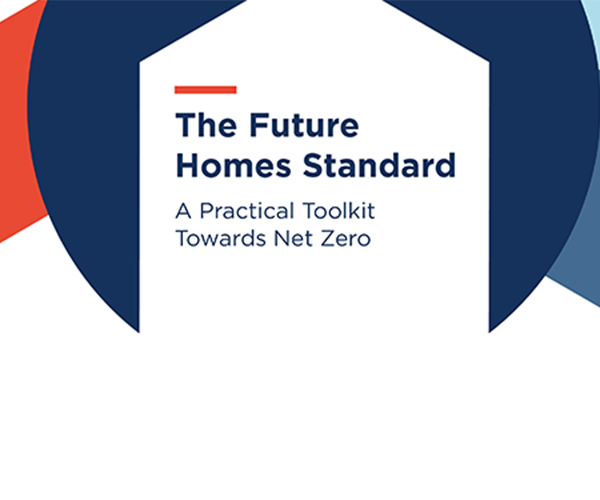Ben Nixon, Senior Associate Partner and National Retrofit Lead at Baily Garner has once again been featured on Unlock Net Zero’s website to discuss ‘Embedding Retrofit Within Your Asset Management Strategy’.
While Local Authorities are committed to the 2050 Net Zero target they are missing one crucial aspect to delivery…
As National Retrofit Lead at Baily Garner, I’ve supported bids for SHDF Demonstrator, Wave 1, Wave 2.1, Wave 2.2 funding, and have done the same for our clients submitting an application under the new Warm Homes: SHF Wave 3 scheme.
As each wave has brought the sector closer to achieving retrofit at scale, it has become more and more apparent that a key ingredient for a successful bid and project is thoroughly understanding the housing portfolios.
Historically, those who own housing have focused on the quantity and condition of building elements to assist in informing basic asset management and future planned maintenance.
The UK has some of Europe’s worst performing and least energy efficient homes, and yet, when it comes to making key decisions around investment, there’s rarely a complete understanding of carbon expenditure and energy performance, let alone a costed analysis on potential improvements.
This lack of data leads to organisations weighing the benefits of retrofit measures in terms of operational carbon, without considering the cost of investment, known as embodied carbon.
An example would be replacing functioning and reasonably performing windows to achieve a very small energy-efficiency benefit, while the embodied carbon cost of manufacturing and installing them outweighs these operational gains; not to mention the installation cost of replacement in terms of ‘cost-per-SAP-point’.
On the other hand, a whole life carbon approach considers both operational and embodied carbon when deciding on appropriate retrofit measures.
In an ideal scenario, organisations should not have purely retrofit or other separate programmes, but holistic programmes of work carried out that encompass energy, condition, compliance or carbon-led packages, with the opportunity to provide improvement outcomes under the other categories.
But, to make this a reality, organisations need thorough, accurate understanding of their housing stock from one single source.
Follow the 80/20 rule
Many organisations have large numbers of properties, which makes it difficult to consider them at an individual level. The common approach is to categorise properties into archetypes for consideration, but this can lead to a difficult balancing act between too few and too many in each, with broad assumptions being made on built form and what constitutes an archetype.
Too few means a detailed analysis is unviable, with conclusions too broad to generalise, while too many means the number of variables become too high to decide on broad actions.
We recently published the second volume of our Retrofit Toolkit – Unlocking Retrofit at Scale – to explain how organisations can reconcile these competing interests using the 80/20 rule.
This means 80% of the ‘heavy lifting’ is done at the archetype level, with the remaining 20% at the individual property level.
By surveying a handful of these properties and determining the work required to achieve an EPC ‘C’ rating or a measure of space heating demand, a generalised plan can be established for this archetype.
This approach creates efficiencies in any subsequent retrofit programme during the design stage, where surveys can be used to ‘top up’ designs (the remaining 20%) to suit a specific dwelling, where archetypal information is already available.

Accurate costs
Probably the most difficult task is to weight potential improvement measures in a model that is actionable, so property groupings can be imported to evaluate whether they should be included in programmes.
This allows organisations to calculate the extent those programmes will improve their overall stock in line with strategic objectives.
The key component to achieving this level of detail is having accurate cost information, and that’s where it pays dividends to enlist a third party with expert knowledge of the retrofit market.
I recently concluded a project assigned to Baily Garner by the UK’s largest housing association to provide a fully costed, sequenced and optimised management strategy to reach its EPC and space heating demand objectives, as well as net zero by 2050.
This included a priority table of costed retrofit measures for each archetype within the organisation’s housing stock, as well as our recommendations to target specific estates where retrofit measures and defect rectification would make the biggest impact in line with its decarbonisation objectives.
Existing stock condition surveys are typically geared towards component condition and are amenity led, but if there is to be reliance on this data for more than just an amenity and component lifecycle, the format of stock condition needs to move away from this to a more holistic review of the property, creating more data points that can help organisations pursue programmes with more than one objective.
Business as usual
By pursuing a more comprehensive survey approach, organisations can avoid double paying for data due to repeat visits for similar functions, while also creating economies of scale within their programmes, as they kill two or more birds with one stone.
At Baily Garner, I’ve led our services on some of the largest SHDF funded schemes in the country; it has become more and more apparent that the organisations embedding retrofit into their existing asset management strategies are able to maximise the financial opportunity available through funding – something that will become easier as ways to gather data become cheaper and more accessible.
As retrofitting properties continues to become business as usual, it’s these opportunities that will help organisations to achieve the task at scale and reach net zero by 2050.

To find out more about our Sustainability team, their projects and out latest toolkits, click here.
Written by National Retrofit Lead and Senior Associate Partner Ben Nixon.




